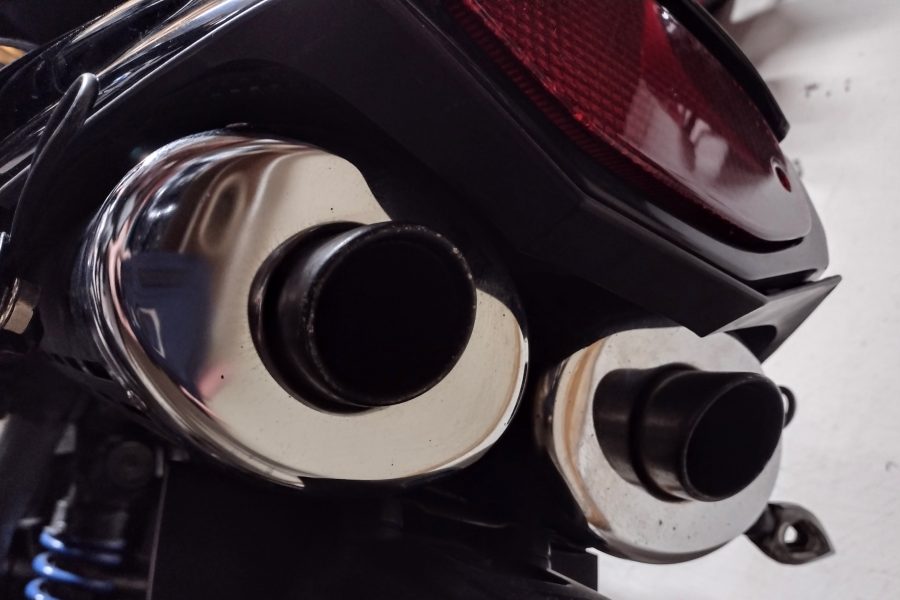You’ve probably already heard reports about the dim future of internal combustion around the globe. Many countries either have already, or are about to, enact legislation around emissions from vehicles allowed on their roads. But if you think motorcyclists and the motorcycle industry will give up on internal combustion without a fight, you might want to keep reading.
Anew report from FEMA(no, notthatFEMA, it’s the Federation of European Motorcyclists’ Associations) goes into great detail about these new regulations all over the EU, and how they’re not taking motorcycles or the people who ride them, into sufficient consideration.
FEMA is based in Brussels and comprises 21 different motorcyclist associations from all over Europe. Their goal is not to shoot down regulations meant to reduce CO2 emissions, NOx emissions, and dependence on foreign oil, but to propose alternatives that aren’t as stark as current plans.
The Proposals
The EU and the UK have announced plans tostop the sales of new CO2-emitting internal combustion vehiclesby 2035. Many other countries are enacting similar legislation aiming for zero CO2 emissions by 2050. On the way to that goal, theEU’s “Fit for 55” packageaims to reduce emissions by 55 percent, by 2030. The package includes provisions for lower-carbon “alternative fuels” to power existing vehicles. The entire idea, though, is that as time goes on, driving or riding an internal-combustion vehicle will become more expensive. Gas prices will continue to increase whether because of geopolitical pressure or because of taxes levied specifically on ICE vehicles. These pressures aim to artificially increase the cost of running those vehicles compared to electric or public transportation.
大部分的规定写的方式,either motorcycles aren’t included, or motorcyclists aren’t taken into consideration. The FEMA report refers to the “Havana Effect,” which, if you know anything about Cuba, you’ll understand immediately. Faced with buying a vehicle they do not want, a consumer will probably instead choose to keep their current ICE vehicle on the road long past its expected service life. The EU cannot entirely ban the use of the existing fleet of vehicles. It can only incentivize the use of new, electric vehicles. If those incentives backfire, the current polluting fleet will stick around.
Motorcyclists who own and love their internal-combustion bikes as they are will have no problem imagining a “Red Barchetta” future, where we keep our beloved bikes under wraps and take them out for a hooligan run whenever possible.
The Catch
Electricity doesn’t just pop out of thin air. All of these regulations are written from a perspective that considers electricity the only real, viable zero-emission fuel to meet all future standards. But electricity must be generated somehow. FEMA’s argument is one that runs “well to wheel.” They argue that emissions should be measured from the source of the energy to the moment it is burned or used by the vehicle it’s powering. Pumping oil out of the ground and refining it costs energy, but so does building windmills, extracting hydrogen, harvesting biofuels, and mining the metals necessary for batteries. Measuring emissions only at the tailpipe does not tell anyone the whole story. Next-generation combustion fuels can power vehicles and produce less carbon in the process, if measured from the fuel’s production. They are currently quite expensive, but increased demand can change that.
The Infrastructure Problem
A push toward zero emissions in all aspects means everyone will lean more heavily on the electrical grid. Is that infrastructure prepared for the additional strain? Will the costs to upgrade the grid, install (many) new charging stations, and produce more electricity fall on governments and therefore citizens in the form of taxes? (Spoiler alert: Absolutely, yes.) Are these externalized costs and additional emissions taken into consideration when a single electric car is recharged?
FEMA argues that most new regulations present “zero tailpipe emissions” as the end goal but should instead aim for fewer emissions in theentire life cycle of the fuelthat powers a given vehicle. This would open up options for new internal combustion vehicles. It could also keep older vehicles on the road, if researchers can come up with alternative low-carbon fuel that matches fossil fuels in combustion and energy capacity well enough.
While the USA is not yet proposing such stringent measures, it’s a good idea for Americans, too, to keep a close eye on all of these global proposals. Greenhouse gas emissions, particulate emissions and geopolitical pressure are pushing global fuel supplies away from fossil fuels and toward renewables. FEMA makes excellent points about these renewables, especially when it comes to keeping internal combustion vehicles from becoming entirely obsolete. Individuals will still need transport. We cannot afford to throw away our current cars and motorcycles, and most of us really don’t want to. Fuel prices will keep rising; that is inevitable. But banking everything on an entirely electric future is a bit too “eggs in one basket.”
It’s Always About Money
Currently, however, alternative combustion fuels are “too expensive” to research. That is, the R&D itself is very expensive, and the end product will be similarly expensive. There’s a good chance that science can come up with alternative combustion fuels that emit fewer greenhouse gasses than electricity, if we take generation into account. The way current regulations are written, though, only electric vehicles will qualify for the “zero emissions” future. So any company thatcouldspend the money to create alternative combustion fuel,won’t.
Boil It Down
FEMA’s argument is sound: alternative non-fossil combustion fuels have the potential to keep current ICE vehicles on the road much more cleanly than current fossil fuels. But current regulations do not not incentivize that research; only electrical charging and battery research is pushing forward, thanks to the funding problem. Wholly changing the global transportation fleet has the potential to create millions of tons of waste in junk cars, the “Havana Effect” of old cars and motorcycles staying on the road (and polluting) long past their expected service life, extreme strain on the electrical grid, and a single point of failure for transport (not to mention heat and all the other ways we’d have to use our extremely taxed electrical grid).
So many motorcyclesalreadyemit非常few GHGs and particulates compared to our four-wheeled brethren on the road, that switching existing motorcycles to an alternative, lower-carbon fuel has the potential to just leave us all alone. And that, dear friends, could save the sport as we know it.







